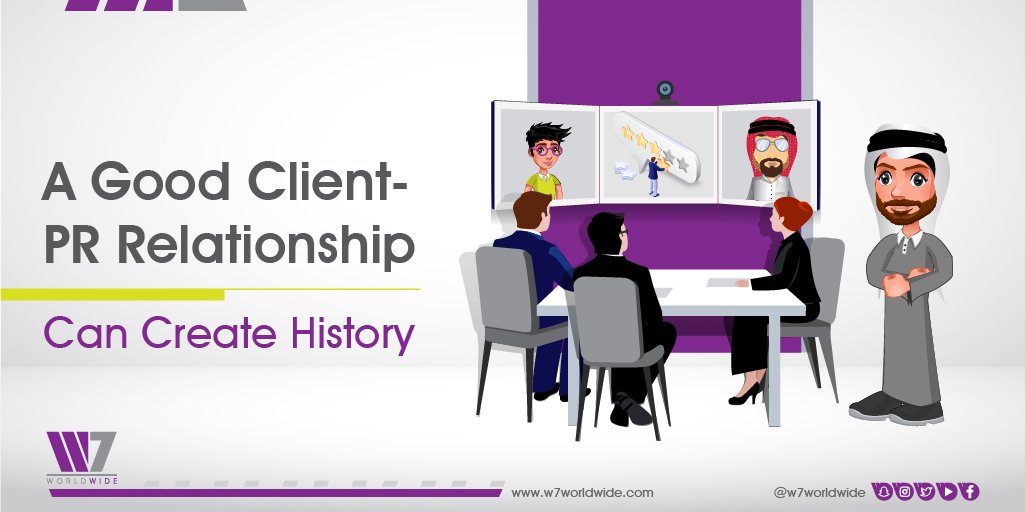The client-agency tie-up is important for a successful public relations business. And like any other relationship, this too is sensitive — for you may earn or burn a prospect, depending on how you swim through the dealings.
Subtle handling may take you on a trajectory of excellence, good clientele, and recognition including awards. But if you get it wrong, you will wreck the ship sinking all your investments and dreams. So, float the relationship. Don’t sink it.
Why it matters most
The relationship between a client (a commercial setup, an organization, or an institution) and a PR agency is much more than mere sharing content and promoting a brand. It involves total understanding and trust. And how do we do that? This is achieved when the deliverables under the agreement are worked on; when we consistently maintain the rhythm of communications; and when we meet often enough to brainstorm ideas and thrash out differences if any.
How It Works
Both the client and the agency have an equal role to play here in the development of a successful client-agency relationship. And the best relationships share some common characteristics like trust, collaboration, mutual respect and chemistry, accountability, and of course honesty. The agency’s objective is to help the client achieve its goals. And it’s important that the client works with the agency to facilitate this.
Understanding the Finer Points
When it comes to a good relationship, it is important to learn the nuances of the roles that both parties play. And as I mentioned above understanding is the key to prolonging as well as stabilizing relationships. Trust and understanding then become the hallmarks of any good relationship, whether familial or business. More so, when it comes to a client-agencies tie-up.
So what is needed is that PR practitioners must have a good study of the client’s set-up, whether a business or an organization considering its aims and objectives and expectations and needs. Similarly, the client needs to trust the agency sharing their confidential information with them. Such a line of trust assures a smooth and the best possible job, which is the aim of them to come together.
Defining rules
A stable relationship however needs to have their job cut out before they hit the road. This should be carefully thought out and based on a realistic, achievable, and agreed-upon deal with the client in advance. A written agreement is the best and a must for any agreement. This ensures that everyone is on the same page. Even if there is a verbal discussion during a meeting or over the phone, it must be followed up by an exchange of emails to ensure it is on record.
An agency can deliver a consistently high level of service by having the right systems in place. A sound system along with a good team and strong internal communication prevents costly mistakes. Clients choose agencies with specialist skills, networks, and knowledge. And so, it is incumbent on the agency to ensure that their team is up to the task.
Honesty
There are many occasions when the client-agency relationship is bound to hit bumps in the road. Differences may erupt, leading to sometimes ugly turns. Good leadership on both sides takes such things in their strides and will do everything to iron out those differences.
The best thing that an agency can do to avoid such turns is that it needs to keep the client updated with regular reports and be honest about any issues that arise. Clients on its part should respond to agency queries and give them feedback on ideas. The client knows their business.
Respect Your PR Agency
Why a client company or organization approaches an agency to do its PR job? It’s mainly because it is the agency that takes years to create a reservoir of trust with the media, building productive relationships with journalists and influencers. This eventually becomes their forte to serve their clients, build up a brand and educate the masses.
Agencies work hard to customize each client’s media plan separately and develop content accordingly. Therefore, the clients need to be patient in times of crisis and pay respect to the agencies, besides paying them on time.
Conclusion
A good client-PR relationship is essential for the benefit of both parties. And, therefore, it is important to take care of the measures to build sound and stable relations. This can be done by way of 1. Socializing, 2. Flawless communications, 3. Frequent meetings, particularly when there are issues to sort out, 4. Showing respect to each other in times of differences, if any; and 5. Behave like grown-up boys – in times of partnership or parting ways.


